Unorthodox Filmmaking: Lessons from 'Waves' Director Trey Edward Shults
Trey Edward Shults' Waves is a wrenching tale of forgiveness that plays with narrative and form.
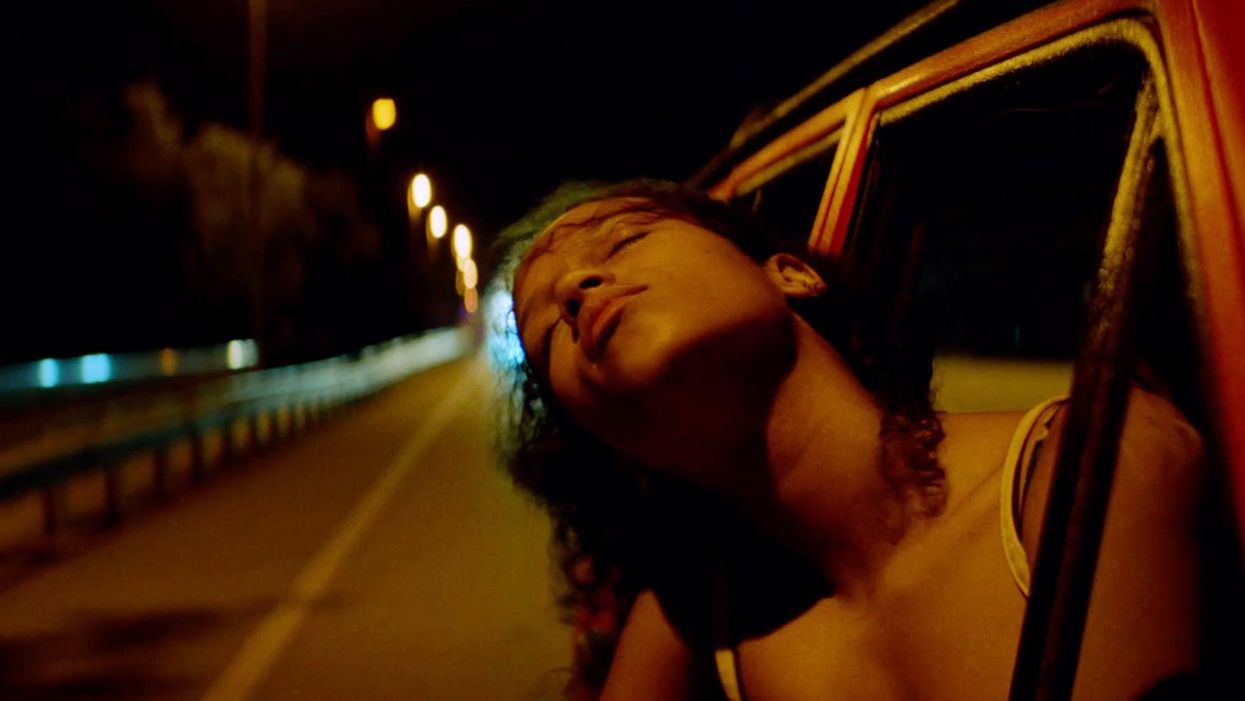
I will never forget the way I felt when I saw Trey Edward Shults' directorial debut, Krisha. The microbudget drama (made for $30,000), mined from a deep well of Shults' own family trauma, chronicles a Thanksgiving family reunion from the perspective of the titular middle-aged woman. She's a recovering alcoholic, and though she maintains—indignantly—that she’s sober, a barrage of chaotic but meticulously choreographed sequences depict her unraveling.
Over the course of 24 hours, Krisha's self-destructive behavior and return to drugs and alcohol cause the family to spiral into extreme dysfunction, like a slow-motion train wreck led by a histrionic conductor. The film is a harrowing experience, with a cinematic gravitas evocative of John Cassavetes and Ingmar Bergman. With it, the 27-year-old announced himself right out of the gate as one of the most exciting talents to watch.
"We shot enough for a four-hour film: 150 pages of script over 35 days and more than 50 locations."
Shults delivered on this promise. It Comes at Night, his sophomore effort and the first two films he would make for A24, was a gripping post-apocalyptic family drama that showcased the filmmaker's mastery of tension. Now, Shults has released Waves, and it's his most ambitious yet.
Set in South Florida, Waves follows a suburban black family through a wrenching journey of love and forgiveness. The elder son, Tyler (Kelvin Harrison Jr.), is a successful high school athlete who practices wrestling with his domineering but well-intentioned father, Ronald (Sterling K. Brown). The younger daughter, Emily (Taylor Russell), is just starting high school.
In an audacious narrative move, Shults begins the film with Tyler as the protagonist, but at the midpoint, the film becomes Emily's story. The catalyst for that change is a shocking tragedy involving one of the family members, and the wrenching experience of this transference of subjectivity feels like a rebirth.
In many ways, Shults' major focus with Waves is subjectivity itself. As he described in our interview, every element of the film's mise-en-scene serves to capture the inner lives of Tyler and Emily.
First, there's the music—Waves is fueled by a dynamic soundtrack featuring Animal Collective, Kendrick Lamar, Radiohead, and an original score by Academy Award-winning duo Trent Reznor and Atticus Ross. The restless cinematography from Shults's frequent collaborator Drew Daniels captures the roving, rollicking experience of Tyler's youth, but shifts to a shattering stillness when we enter Emily's perspective.
The film features five different aspect ratios in total: it begins at an open, free-flowing 1:85 and progressively narrows to convey the claustrophobia and downward spiral of Tyler's trajectory. Emily’s story, which begins with her reeling from the family's recent trauma, begins at a narrow 1:33, then widens as she regains a sense of self and learns how to forgive.
No Film School sat down with Shults to discuss his unorthodox approach to filmmaking, including how he used every tool at his disposal to get inside his characters' heads, how the film nearly fell apart during pre-production, and why he refuses to rehearse with his actors.
No Film School: There are many different levels on which this film is innovative, but for me, the narrative structure was the most emotionally resonant. It was really daring to switch protagonists midway through the film. Tell me about how you came upon that structure. I heard this film has been gestating for a decade?
Trey Edward Shults: This movie has basically been in the back of my head forever. I had the structure figured out probably five or six years ago because I had thought through Tyler's story, but then I was like, "You can't just end the movie with that. There has to be more." Then I had an epiphany that the movie could be two halves of a whole. I wanted it to be about a brother and a sister, and the movie could kind of have this baton pass from one to the other.
The idea for the two parts came just from living. I was going through some hard times, and then I got through to the other side and had perspective on it. It felt kind of like the rebirth that happens after grief.
I've seen a lot of two-part movies, but we didn't know if switching characters would work in this one. We were excited to do it. I think it works because the character who plays Emily, Taylor Russell, is so amazing.
"The script was pretty unorthodox. There is literally music embedded in it. You can click play and pause."
NFS: Given that you'd had the idea for so long, what did the screenwriting process look like?
Shults: Well, the movie was in my head for a super long time, but I hadn't written anything down. Occasionally I'd jot down overall ideas and images, but I couldn't figure out how to link it all. And then, for whatever reason it was, I think a big part was meeting Kelvin [Harrison Jr.] on my last movie. Right after It Comes at Night was released, I was depressed for a few weeks, and then I just started writing Waves, and it was all clicking into place.
NFS: Waves is a very visceral film, and in many ways, it's bigger than the script itself. How did you communicate your vision to the people that needed to bring it to life?
Shults: The script was pretty unorthodox. I tried to make spiritually true to what the movie was going to be. There is literally music embedded in it. You can click play or pause. There are big fonts, small fonts, colors, aspect ratios, camera movement. All this, of course, and I'm still trying to make it still flow when you read it.
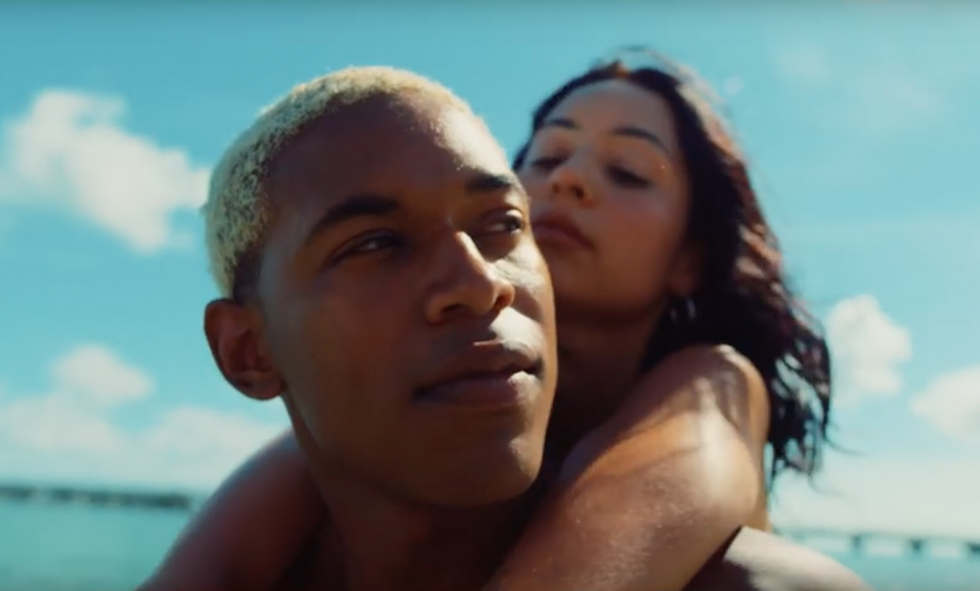
Shults: For example, literally in the middle, after the tragedy, there was a blank page in the script. I wrote something like, "A paragraph of colors overtakes the screen and a transference is happening."
In terms of communicating, my DP and I have made every movie together. We just vibe and connect and see everything eye to eye.
NFS: There did seem like there was a parallel movie happening with the evolution of the music.
Shults: I'm really moved by music. I'm obsessed with it. Focusing on music felt right, especially since the movie is told from Tyler and Emily's point of view. They're teenagers. At that time, music was a huge part of my life. It felt right to have music guide their story.
"Every choice we made with the camera was to either literally or emotionally connect the audience with what the character is feeling."
The soundtrack happened really organically. I had a massive playlist I was listening to while I was writing. I would add songs to the story arc. Music informed everything. That's why I wanted to embed it into the script.
You're right about [the music] having its own parallel narrative—if you listen to the songs in order, a story is being told, and it's the same one from the movie.
NFS: I'm sure the music also helped the actors get in the mindset of their characters.
Shults: I think so, yeah. I think it also just helped people reading the script for the first time. Music frames you up and puts you in a headspace that nothing else can, you know? And then, on set, we just had music playing the time, nonstop. It was the spirit of making the movie.
NFS: Let's talk about the cinematography. You open the film with a rollicking sequence where the camera is basically moving nonstop through all these different scenes in various characters' lives. And then, for the rest of the film, the camera slows down a bit, as if it's trying to get inside everyone's head.
Shults: You got it! We're just trying to put you in their heads. First, it's Tyler; then, it's Emily. Every choice we made with the camera was to either literally or emotionally connect the audience with what the character is feeling.
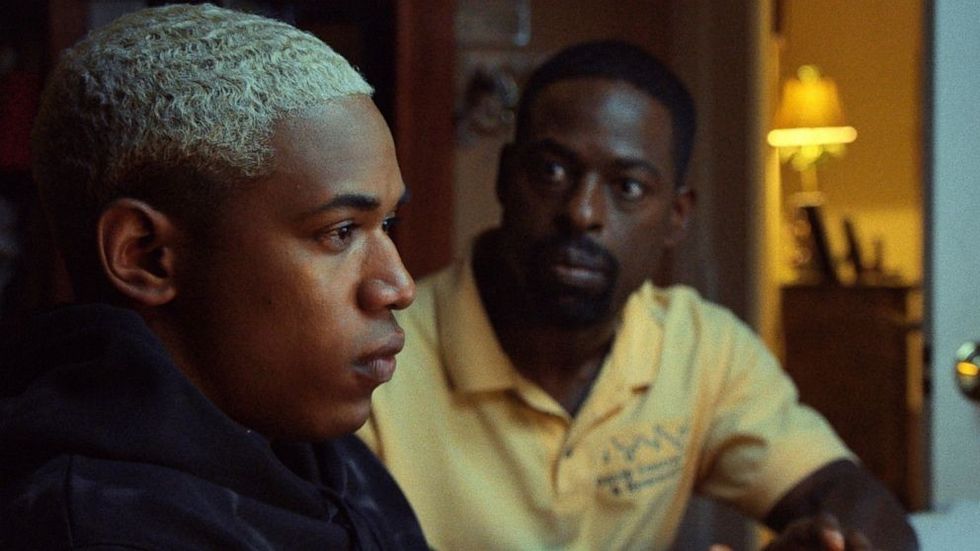
Shults: In the beginning, when the camera's spinning in the car, that's what their love feels like in that moment. It's a bottle of fire and they're free and it's crazy and it's beautiful. The only way to feel that is to dance with them and spin with them. Then, we capture the movement and chaos of Ty's world. Then, the camera doesn't move at all so we can feel the isolation and stillness when Emily's world takes over.
The aspect ratios are doing the same thing—all the cinematography is trying to get you closer to the characters' headspaces.
NFS: I'm glad you brought up the aspect ratios. Can you take me through that evolution, too?
Shults: The movie starts at 1.85:1. Then, it closes in on Tyler, because his world is dismantling and closing in on him—almost like a panic attack—and it feels like the movie is doing the same thing.
And then for Emily, it switches to 1:33 and opens back up with her. I hope it feels like a burden is being lifted off her shoulders. She's trying to love herself again and heal.
The aspect ratio changes again when we go to anamorphic. We use anamorphic lenses for altered states of mind, like when Ty's using drugs for the first time. It's a shallower focus and more lens flares—it just feels more expressionistic. We also used it for moments with Emily, so it's linking them. It's also just a beautiful ratio for faces.
NFS: Can you remember a scene that was a challenge to bring to life on set?
Shults: The first one that pops in my mind is a single take that follows Ty into the party when he's watching Alexis. I had never done a single take that long, and with that many extras before. The blocking was hard. But we discovered that playing music for real in the scene just opened everything up. So the music you're hearing in that scene—we just timed it and actually played it on the day, and the kids could interact and it felt real and right. That was tricky but fun once we got it.
"Pre-production was a nightmare."
NFS: I'm sure another challenge was when the film almost fell apart during pre-production. How did you push through that?
Shults: It was the most stressful time. We had a bond company that said our schedule was impossible. They found out I cheated the margins on the script. A24 was freaking out and it was a lot. Honestly, I just was stressed like crazy and thought it was going to fall apart.
The bond company refused. They didn't bond the movie. To A24's credit, they stayed with us and financed it anyway. Thank goodness. It was very, very stressful. That was the most stressful part. Once we started shooting, we had hard days, but overall it was so much fun. But pre-production was a nightmare.
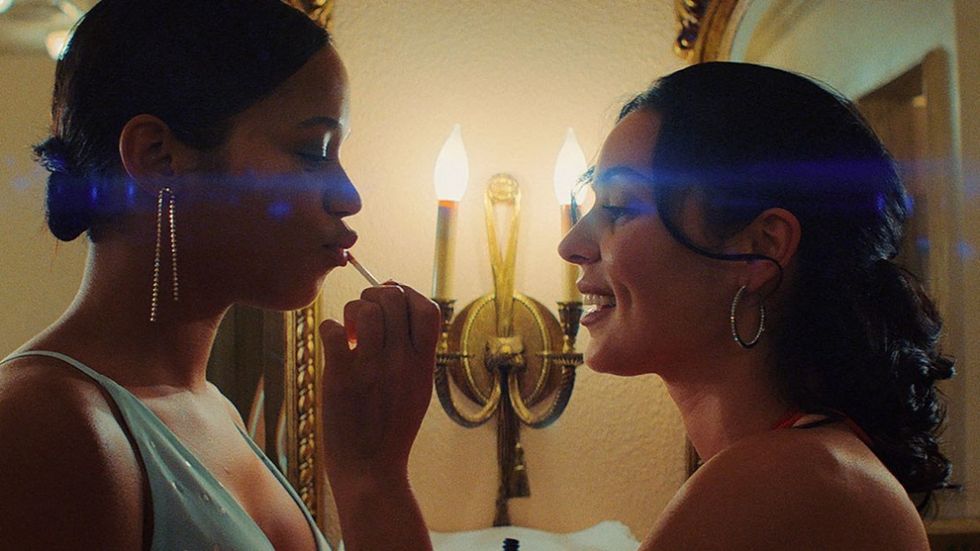
NFS: Why did the bond company think your schedule was impossible? Too many locations?
Shults: We shot way more than is in the movie. We shot enough for a four-hour film: 150 pages of script over 35 days and more than 50 locations. We didn't have all our locations two weeks out. We didn't have all the extras cast. It felt like walking the line the whole time, you know? It was a bit crazy.
We'd have to do phone call interviews [with the bond company] and explain to them why we could make this shooting day or that one. They would look at our script and be like, "You have this many pages. How are you ever going to shoot it in this amount of time?" We had to explain that we wouldn't shoot traditional coverage. So, for example, we'd be shooting a single take in one scene, or we'd have two cameras and we're going to do half our takes like this and half our takes like that. They still didn't believe it and trust it.
"The world will just mess with you. Nothing's perfect on these movies. So you have to be open to being inspired in new ways once you're on set."
I think why it worked, though, is because the actors are so amazing. They're just great from take one. Also, with Drew [the DP], we've made everything together and we know exactly how we work together. We can work fast. We know what we need. We don't do traditional coverage.
NFS: It takes a lot of confidence to not do traditional coverage. Do you almost edit the film in your head beforehand?
Shults: I think so, definitely. With Drew, we spend a lot of time shot listing everything to death. We're really in tune. The aim is to have enough trust so we can pivot and change the shot list on a day. Things happen. The world will just mess with you. Nothing's perfect on these movies. So you have to be open to being inspired in new ways once you're on set.
NFS: Tell me a little bit about the rehearsal process. I know you've worked with Kelvin before.
Shults: We actually did no traditional rehearsals. Everything we did for prep was talking. That would range from text messages or phone calls months before, to getting together and going over scenes, to me getting notes from actors on their perspectives and then changing stuff. We just talked about everything a lot.
I get really excited seeing [the performances] for the first time and filming it. So I don't like rehearsing. I don't even like going through the process of blocking. With the actors, we just try to know the script and the story like a second skin. If we're all on the same page, we can build on it together.
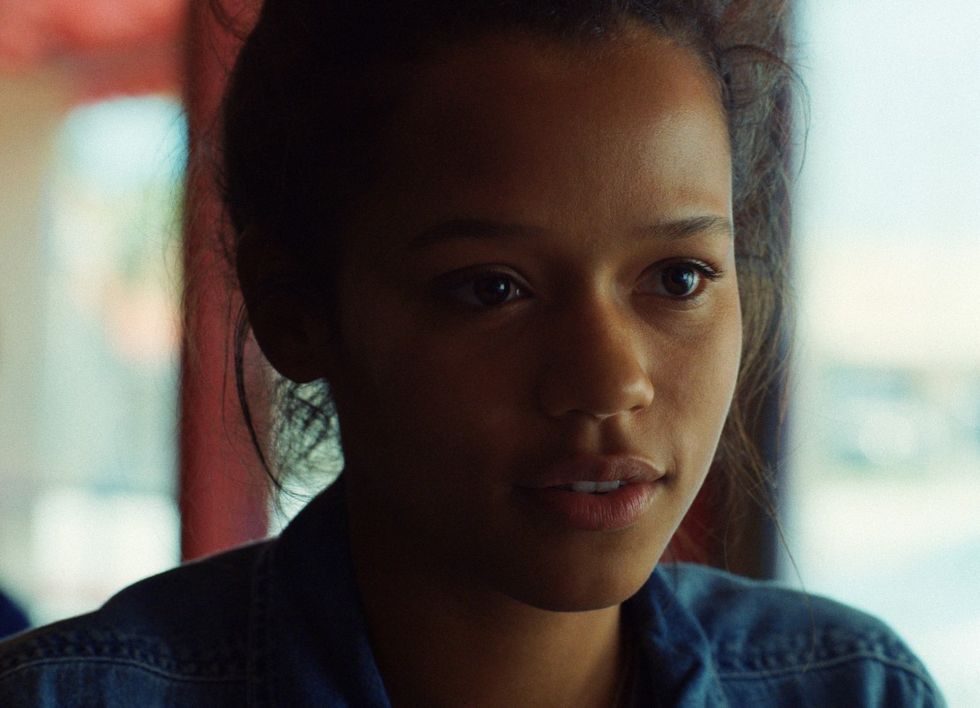
NFS: It's great that you have such confidence in your own style of working. I think this is becoming more common across the industry—filmmakers are realizing that it's good to break out of the traditional framework.
Shults: The first movies I ever worked on were Terrence Malick movies. Those are the most unorthodox sets ever. I was so inspired. I wondered, "How did he figure out his way of making movies?" I thought maybe I can figure out my own way of making things.
I'm trying to make unique movies. I think the spirit in which you make them will go into the spirit of the final movie and what it feels like. So I make movies in an unorthodox way.
NFS: Do you have any advice for directors hoping to make movies in their own, nontraditional contexts?
Shults: For me, it's two things. One is drive. Just don't give up. Keep making stuff. Keep pushing yourself and loving the work.
And then, find your voice. No one else in the world is you. If you find your unique perspective—your unique take on something, your unique filmmaking voice—people are going to gravitate towards that because it's unique and special.
NFS: I like that second piece of advice a lot. A lot of first-time filmmakers try to emulate other directors they admire.
Shults: I think anything I ever made where I emulated someone else, no one wanted to see. I found success once I went inside and tried to find my own voice. I think that's the most important thing.
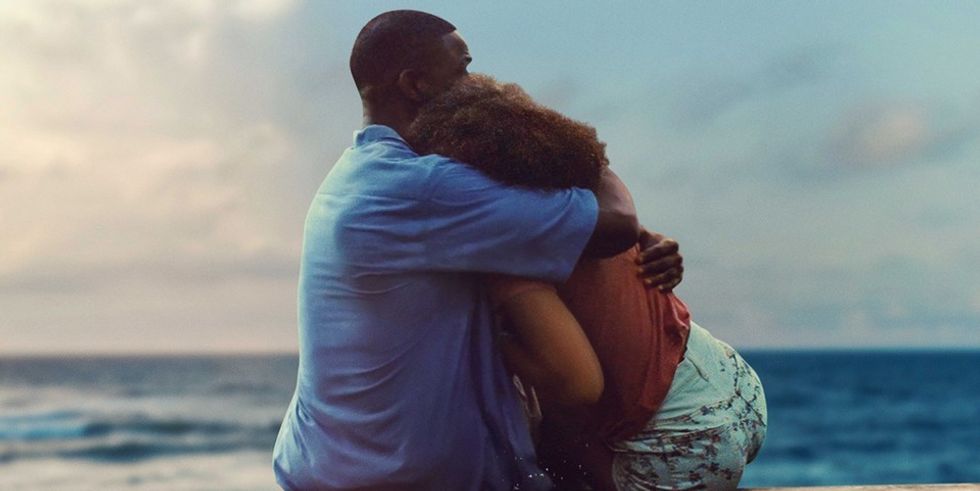
NFS: Colors play an important role in the emotionality of this film. How did you conceive of the palette and how it changes throughout?
Shults: We wanted it to feel true to Florida. You know, Florida pops. It's a colorful, beautiful place.
The colors are inspired by the spirit of the characters and where they're at in each scene. We thought we could play with color in an expressionistic way.
Also, in the movie, there are literally these color interludes. They're not just chapter markers—they're a spiritual link between Tyler and Emily, brother and sister. The colors express their emotions, which connect them.
The last movie was kind of dark and barren and depressing. This one was liberating—it just felt colorful, free, full of life.
NFS: Your evolution as a director has been so much fun to watch. With Krisha, you had a small budget and shot it at your own childhood home. It Comes at Night broke out of that familiarity but still played with family dynamics, a subject that really seems to animate you. Is there anything that you tried in this film that you feel like you didn't have a chance to do in previous films?
Shults: I mean, there's so much. Every other movie I've made is contained, and this one was out in the world. It was filmed at over 50 locations, in cars, spinning cameras. It felt free and it felt liberating. We had some hard days, but it was awesome.
That being said, even as [my films are] getting bigger, I'm still trying to capture the spirit of making Krisha. I just want us to feel like a big family, where everyone's excited and loves each other. That's what it felt like making Waves.
NFS: How do you facilitate that feeling on set?
Shults: I think honestly it's just being straight up. No bullshit. I'm walking around without shoes and sitting on the floor. There's no set hierarchy. No pretensions. I mean, it's still a set and we have to make a good movie and be professional. But I just try to be open and spread love. Everyone has an opinion and is valued.
That way, when you go through the hard times, it's even more rewarding because you love each other and care about each other, and you care about what you're making together. It's just the best. It's the way that I think everyone should make movies, you know?











